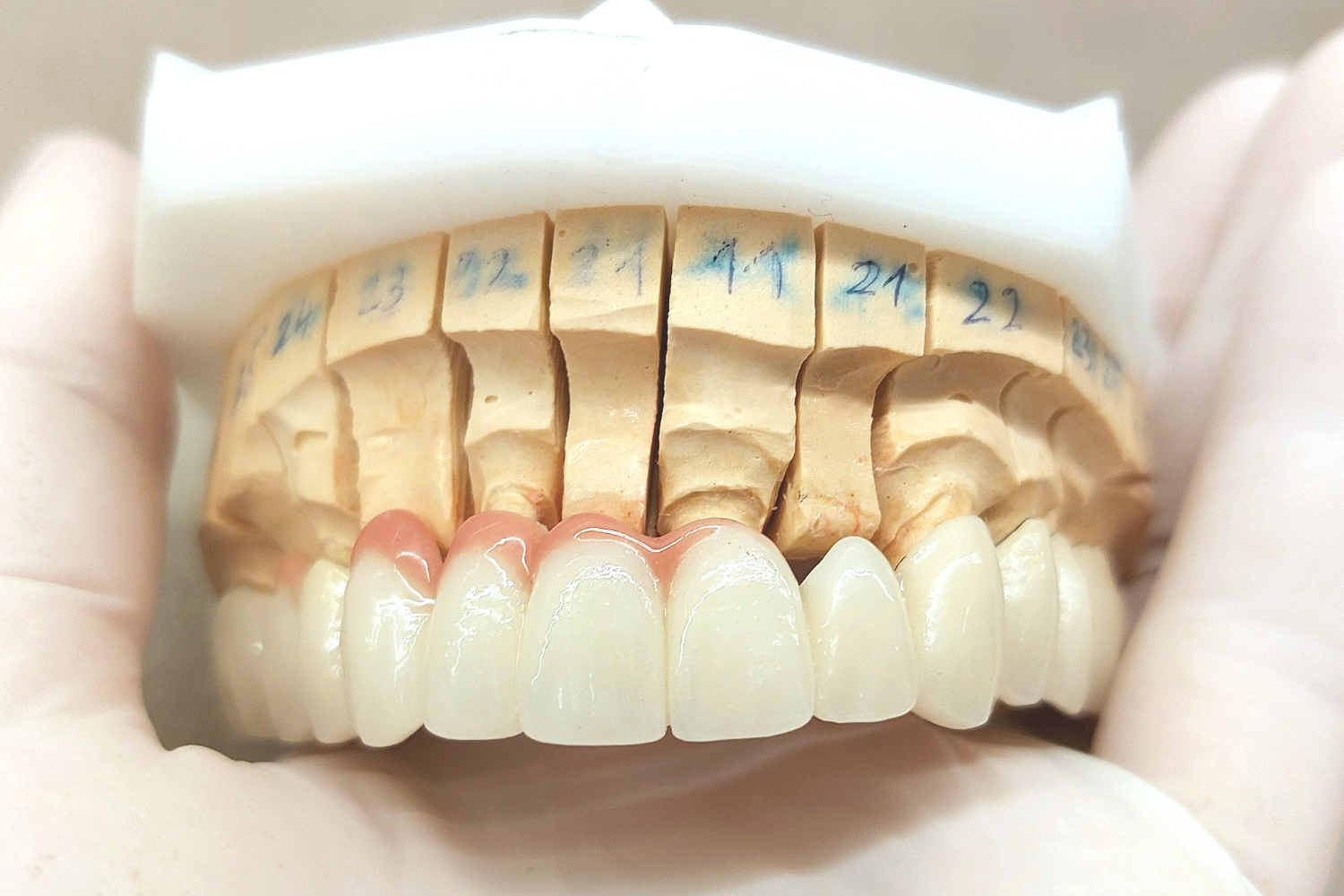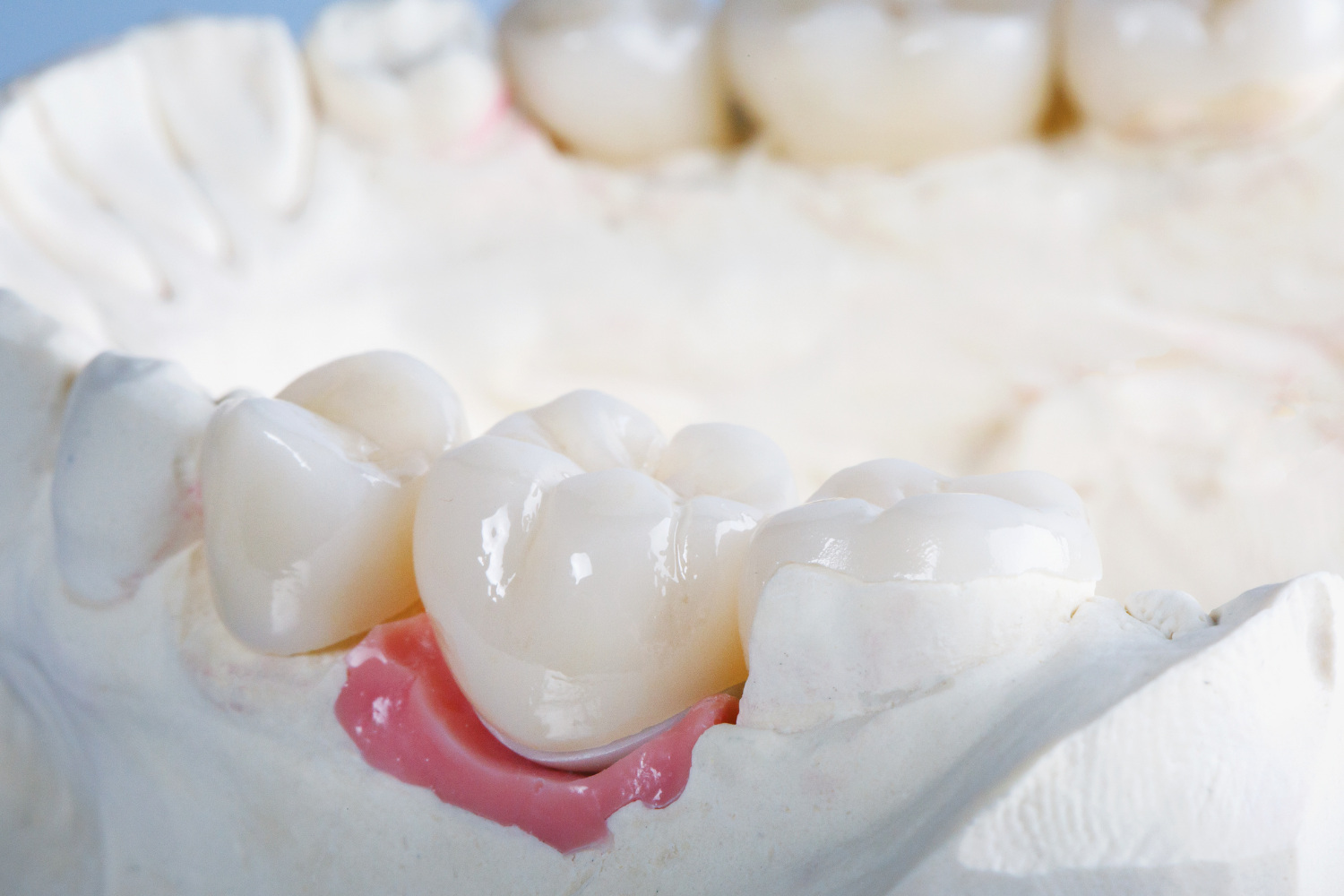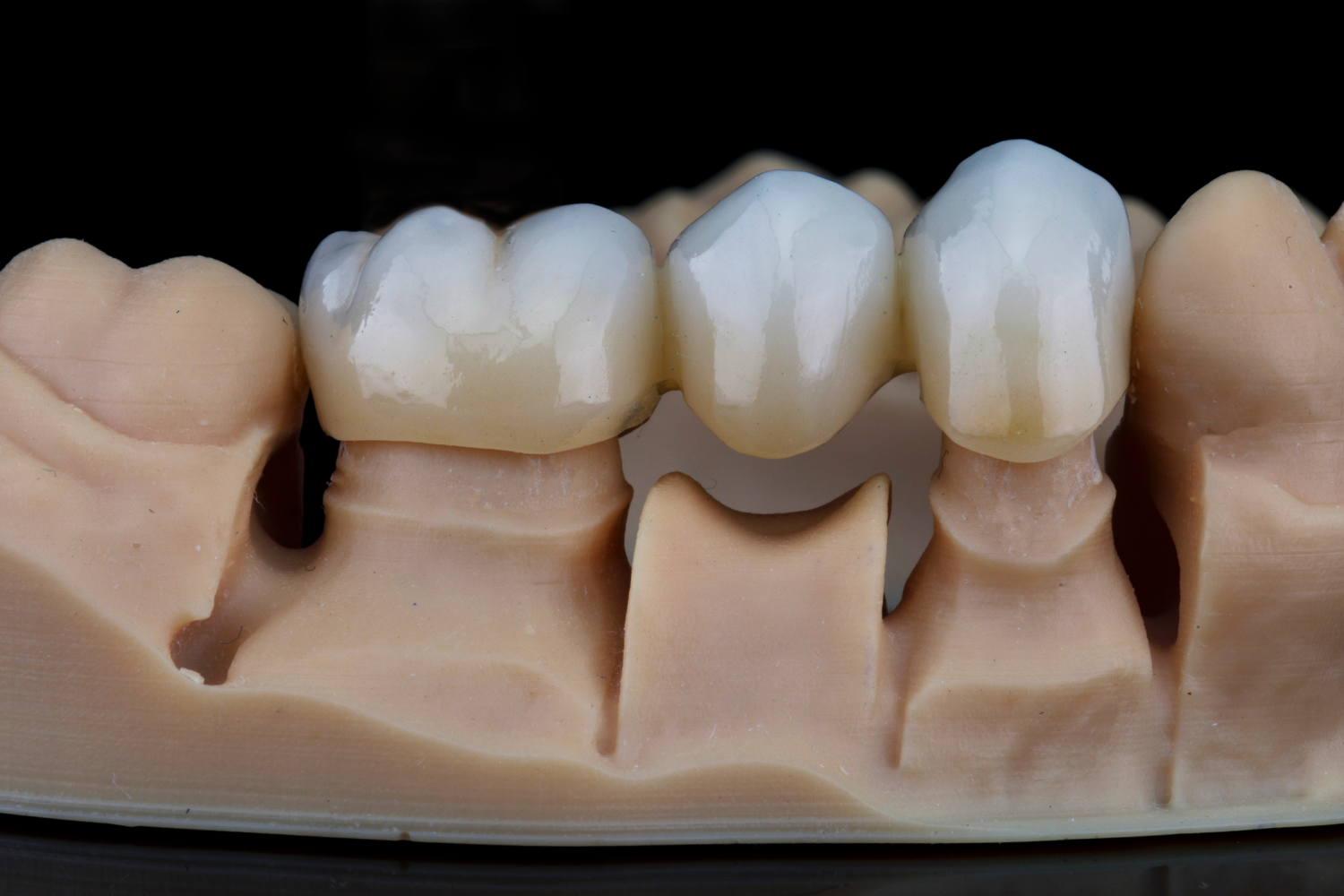Crowns and Bridges – a Lasting Solution for Function and Aesthetics
Dental crowns and bridges are fixed prosthetic restorations used to rebuild damaged, aesthetically compromised, or missing teeth.
While crowns are placed on individual teeth or implants, bridges are designed to replace one or more missing teeth by anchoring to adjacent natural teeth or implants.
Types of Materials for Crowns and Bridges
Metal-Ceramic Crowns
These crowns feature a metal base coated with a layer of ceramic.
They are known for their high strength and durability, although the aesthetics may be slightly reduced due to the potential appearance of a dark line along the gum margin.
They are often recommended for patients with periodontitis, especially in advanced stages of the disease, as the metal substructure provides better stability for teeth with reduced periodontal support.


Full Zirconia Crowns
Made from 100% zirconium oxide, these crowns are exceptionally strong and resistant to fracture.
They are ideal for posterior teeth but can also be used in the aesthetic zone thanks to modern multi-layer zirconia processing techniques that provide a natural appearance.
E.max (Lithium Disilicate) and Zirconia-Ceramic Crowns
E.max crowns represent the pinnacle of dental aesthetics, made from highly translucent glass-ceramic material, making them perfect for anterior teeth.
Zirconia-ceramic crowns combine the strength of zirconia with the lifelike appearance of ceramic, offering excellent durability and aesthetics.
However, for patients with periodontitis, one-piece full zirconia bridges are not recommended, as zirconia lacks the elasticity of metal and may fracture under stress if not properly segmented.


Veneers
Veneers are the ideal choice for patients seeking a perfect smile through a minimally invasive procedure.
They are used to permanently enhance the color, shape, or size of natural teeth, requiring minimal preparation limited to the front surface of the tooth.
The choice of material depends on functional needs, aesthetic expectations, and financial considerations.
A consultation with a dentist or prosthodontist is essential to determine the most suitable individual solution for each patient.
